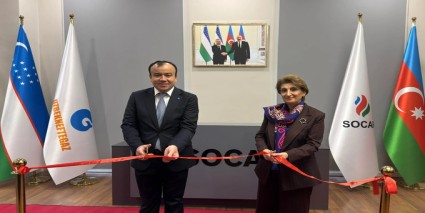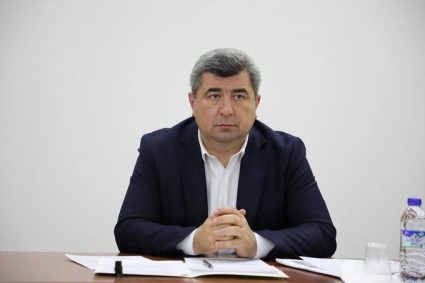Early morning with sunrise Aziz Safarov heads to the field located a few kilometers from his village in Karakul district, Bukhara region. While he rides the bike, his wife Rajabgul sits in the backseat, holding two plastic bottles.For more than 10 years, Aziz has been renting a chunk of land from local state forestry in the desert to feed his family.
While his wife milks the cows, Aziz checks the field surrounded by dunes, cuts some grass and waters the crops. Then the couple rides back home by noon with plastic bottles filled with fresh milk. The milk is usually used for daily consumption and making butter. Sometimes the family sells it to neighbors too.
Farming has always attracted Aziz. After retiring from law enforcement, Aziz found himself indulged in farming practice. He likes to produce his own food. But not many crops can thrive in the middle of Kyzylkum desert, where summer heat can get as high as 55°C, and winter temperature can drop as low as minus 18°C. Along with winter wheat, only millet, mung bean, onion and watermelon can grow in such extreme conditions, he says.
Last autumn Aziz attended farmer field school organized in his village by the International Center for Agricultural Research in the Dry Areas (ICARDA). There he learned about improved wheat varieties which produce more yields than the seeds he used to purchase from local market. Inspired by the new knowledge, he divided 0.8 hectare of his land into two. On one half he planted the Shams seeds provided by ICARDA, on the other half - local seeds.

He watered and fertilized both fields. At first, the new variety seemed to grow slower. After it survived the cold winter and retained its vivid color, Aziz was fascinated with the experience. In late April of 2020, his field was in full bloom.
The evening of 27 April 2020 when the windstorm hit his village, Aziz had just returned from the field. The family sat together for dinner, when the wind blow fly opened the door, and loud cracking of window glass caused Aziz to jump up and look around. Within minutes, he saw rooftops of his house and of the neighbors were gone. The rain intensified and turned into hailstorm.
The next morning Aziz went to check his field. The trees around the field were broken. Some of them were uprooted and thrown into ground. The storm had completely destroyed the local wheat. Although it also damaged the new variety but to a much lesser extent.
“Each wheat spike of Shams variety had around 36-37 grains,” Aziz radiates grief as he describes the loss of some grains to the storm. “After the storm, only 11-13 grains remained in the spikes of the local variety”
A month later, Aziz harvested the field. Despite the windstorm, the new variety did not disappoint. Eight hundred and sixty-three kilograms of the improved variety compared to only 400 kilos of the local wheat harvest from the similar area. “My neighbors think I am lucky”.
Thanks to the new variety, Aziz does not have to worry about purchasing extra wheat, especially during Covid-19 pandemic that hit his village as well. Every month, the family uses 100 kilos of wheat for milling, he says. “So now I’ve got just enough harvest to feed my family until the next harvest.”
This activity was conducted under funding support from FAO within the framework of “Central Asian Desert Initiative (CADI)”.
For Further Information, contact: Ram Sharma, ICARDA-Tashkent, Email: This email address is being protected from spambots. You need JavaScript enabled to view it.















